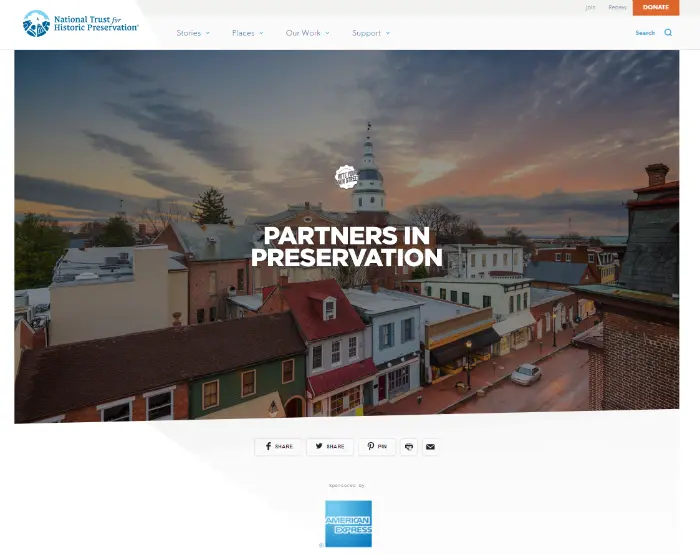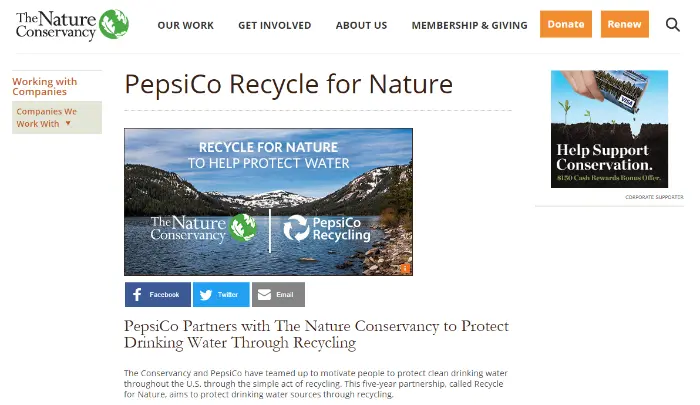Nonprofits and for-profit businesses usually have vastly different end goals. But what if that didn’t have to be the case? What if you could work together to make an even bigger difference in your cause and move even closer to your mission than you’d be able to on your own? When the partnership is right, cause marketing can be mutually beneficial to nonprofits and for-profits, enabling each to widen its audience and attract new and stronger supporters.
What’s Cause Marketing?
Cause marketing occurs when a nonprofit organization and a for-profit business work together to spread awareness or raise funds for a cause. Ideally, the partnership between the for-profit and nonprofit moves forward a set of shared goals through a marketing campaign directed at both entity’s audiences.
Mutually Beneficial Partnership
A cause marketing partnership allows the charity and the business to reach an entirely new audience that is likely to be receptive to what they have to say, coming with the recommendation of the partner organization. If it’s a fundraising campaign, which many cause marketing campaigns are, the nonprofit partner is the recipient of those funds and has more financial capacity to work toward its mission.
The for-profit business, on the other hand, gets to use your nonprofit’s name and reputation to boost their social responsibility and public appearance as a company. Nowadays, consumers prefer to support companies that do more than simply comply with regulations but who give back to their community or promote social good in some way.
Selecting the Right Partner
To reap the benefits of cause marketing for nonprofits, a lot lies in the for-profit business that you tie yourself to. It could be that the perfect partnership simply falls into your lap, but it never hurts to do your due diligence to make sure it’s a good fit and the right time to team up.
When a cause marketing partnership goes wrong, both of your reputations will take a hit, but it may be much more difficult for nonprofits to recover. People generally expect more from charitable organizations than they do from big, faceless businesses. The Susan G. Komen Foundation and Kentucky Fried Chicken cause marketing campaign is a prime example of just how south a campaign can go. With obesity known to increase the risk of breast cancer, partnering up with a fried fast food company wasn’t a good fit for a nonprofit working toward breast cancer awareness and prevention.
Qualities to Look for
Look for a business who possesses the following qualities:
- Doesn’t contradict your cause in any way (to avoid a Susan G. Komen Foundation/KFC fiasco),
- Has a good public reputation,
- Demonstrates ethical business practices,
- Treats employees well,
- Has shown success with past marketing, and
- Is responsive to communications.
Depending on the business this could mean looking into a variety of business policies and trends. Start by looking at their business model, where they source materials for their products, if they outsource labor to other countries and the standards they uphold. Can you still stand behind the company? If you can tick all of the boxes, this partnership may just be worth pursuing.
Imagining all of the potential scandals and ways a business can fall in public opinion, it’s most definitely worth the time to do your research before entering into any binding relationships, either contractually or even just within the public eye.
Questions to Consider
As you’re considering each cause marketing relationship, ask yourself the following questions to help determine whether or not the relationship is a fit.
Is the Company’s Audience Compatible with Ours?
Look at the typical customers or clients of the company. Would they be interested in supporting your cause? Do they have anything in common with your audience? If you can’t see any overlap in audiences, the partnership likely isn’t a great fit. One of the main benefits of cause marketing campaigns is widening your audience for future, solo campaigns, and that’s not possible if the partner audience isn’t likely to actively support your mission.
If your mission is to increase urban sustainable gardening, partnering with a company that manufactures car parts might be an odd choice. However, a partnership with a local nursery or home and garden store may just be the perfect fit for a cause marketing campaign. The product doesn’t have to fit perfectly with your mission, but it definitely shouldn’t contradict what you’re trying to accomplish.
Is the Company Compatible with Our Other Partners?
Before bringing a new partner into the mix, consider all of your current partners. Is this new partner a competitor of theirs? Are they opposed in some other way? This may not necessarily be a deal-breaker, but it’s always nice to know which bridges you’re potentially burning before you do so.
Do We Have the Capacity to Manage the Relationship?
As you most likely know from relationships with volunteers, donors and sponsors, managing a relationship takes a decent amount of time and effort. Think about the person (or people) that will run point on communicating with the new partner company and the resulting campaigns. If your nonprofit is up to its ears in other priorities, it’s likely that an additional campaign and corresponding relationship with an outside organization is the last thing you need in your life right now.
Will the Relationship Be a Two-Way Street?
For the relationship to be a good fit, both you and the for-profit company need to have a say in the campaign and how it’s run. You don’t want to get into a situation where the company is able to use your nonprofit’s name as it pleases in its advertising without needing to run anything past your team. Before you enter into any partnership, you’ll want to come to a mutual understanding of what’s expected from each side.
Are There Any Legal Considerations?
Spoiler alert — we aren’t lawyers. However, if the partnership requires a legal contract, it’s probably a good idea to run it past a real lawyer before you sign. They should be able to fill you in on any confusing legal jargon that might make you regret the partnership down the road, especially if your campaign doesn’t go as planned but you still have legal obligations.
Examples of Cause Marketing for Nonprofits
To give you an idea of what a successful cause marketing campaign can look like, we pulled together some nonprofit examples.
Swifty Foundation and Love Your Melon
The Swifty Foundation is a nonprofit raising funds and awareness for pediatric brain cancer research. Love Your Melon sells beanies and has a good reputation for donating their hats to children battling cancer. They teamed up to sell beanies that are branded with both of their logos. A portion of those profits goes toward Swifty’s mission.

The National Trust for Historic Preservation and American Express
Through their Partners in Preservation Program, the National Trust for Historic Preservation teamed up with American Express to increase awareness of the need to preserve historic places in the United States. The grassroots campaign recognized 25 historic sites around the U.S. and held a popular vote to determine which of those sites would receive grant money.

The Nature Conservancy
The Nature Conservancy works with a lengthy list of businesses to move their mission forward in a variety of ways. On their website, they include a profile for each partnership, like this one for PepsiCo. In turn, PepsiCo also promoted the partnership on their web page for the campaign. The two teamed up to protect clean drinking water through recycling.

Is cause marketing right for your nonprofit? Have you partnered with a business to spread awareness and raise funds? We’d love to hear your thoughts and stories in the comments.

Also need to make sure that NFP leaders know how to communicate with C-Suite executives.
This involves more than surface understanding of the business!!
Good point, Eugene! You don’t want to go into a conversation with a potential partner without doing your research. A good understanding of the potential benefits for each party and a plan of action for the campaign that thoughtfully considers the business and its current marketing ventures will help that conversation go smoothly.